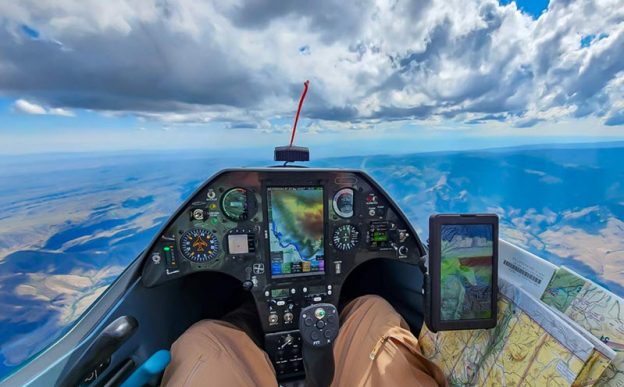As a soaring pilot, we are typically attracted to the fluffy clouds, ridges with wind blowing up them, and hot environments that are conducive to soaring. It’s a great challenge to always find hotter and more buoyant areas relative to others around them. But what about the areas to avoid, it’s not something that we talk about very often. So I’ll do my best to describe the areas we must avoid in order to have a successful soaring or racing flight!
Wet Terrain
There are no surprises here, it pays to avoid wet terrain! There are two ways to identify these places, as always a successful flight begins with a thorough plan. This can be done by researching your local met services, where were the rainfalls in the last week and evening in particular, and where were the heaviest patches also. If it’s not possible to avoid such areas due to the task setters‘ requirements, then proceed with caution, stay high, and don’t be so aggressive in your thermal selection. You can also expect soft conditions when flying in the vicinity of river valleys where the cooler air pools.
Rain showers
No surprises here, typically speaking it pays to avoid rain areas. Along with the degradation of the glider’s performance, you can plan on losing a lot of altitude in a short amount of time, so have excess in hand just to be safe. Expect the area to be unsoarable behind a shower, the area will be flooded by cold air, which will be totally void of any convection and can remain this way for many hours. On the upside, a rain shower may save your day! When an overgrown cumulus gets to the stage of producing rain, the outflow of the rain area will produce a line of lift marked by small wisps of cu. You may actually find lift in the rain, just don’t bank on it! Along with the degradation of the sailplanes‘ performance and the descending air, you can expect to generally lose height though…
Downwind of lakes
We’ve been talking a lot about water, so one more for the playbook. When a lake is long and the wind direction is along it, it’s likely that a pool of stable air will form downwind. Fortunately, it’s also likely that the temperature differential of the lake to the leading edge fields will cause a nice little climb, just don’t find yourself downwind of the lake and low, it typically doesn’t end well…
Down-wind sloping terrain
It wasn’t until I flew in Slovakia for the first time in 2017, that I really started to take note of different elevations in the terrain, no matter how small or large. It really came into play in Australia when I noticed that uphill sloping terrain with the wind on its face, produced plentiful thermals, when the wind is 180* in the opposite direction, it sure was a different story.. So don’t get caught downwind or down-sloping terrain. The air is typically displaced from the colder surroundings down to the warmer levels, making the airmass in that area more stable.
When local soaring or flying across country, don’t just aimlessly fly along, always have the willingness to learn, and ask yourself why areas are good, and in this topic’s thread, poor. When you can identify both, it helps with your soaring decisions. Stay high, dry, and out of trouble! Source: ‚Adam Woolley, Wings & Wheels‚.


